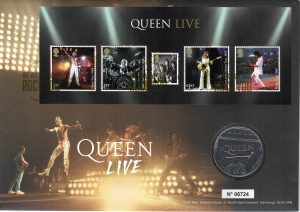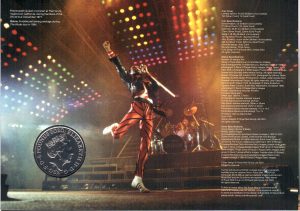No Morgan and Peace Dollars in 2022
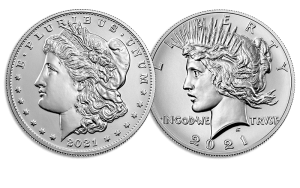 The U.S. Mint announced that they would not produce the 2022 Morgan and Peace Dollars calling it a “calculated pause.”
The U.S. Mint announced that they would not produce the 2022 Morgan and Peace Dollars calling it a “calculated pause.”
According to their press release, the pandemic impacts their suppliers’ availability to deliver silver blanks. Although many areas are returning to pre-COVID operating standards, suppliers require additional time to increase production to meet the higher demands.
The Russian invasion of Ukraine should not affect the worldwide supply of silver and gold since their mines are depleted. However, higher energy prices will impact the mining, refining, and transport of these metals.
The law requires the U.S. Mint to strike American Silver Eagle bullion coins. The law authorizing the 2021 Morgan and Peace dollars does not require the U.S. Mint to produce those coins in other years. If there is a supply problem, the U.S. Mint will strike the required American Silver Eagle Coins and suspend the Morgan and Peace Dollars.
Although popular designs, does it matter if the U.S. Mint strikes the coins again? Would it be better for the hobby if the coins were a one-year tribute and faded into numismatic history?
Queen of the Collection
Queen’s frontman and principal writer was Farrokh Bulsara, better known by his stage name Freddie Mercury. Mercury was talented, charismatic, and a showman whose first big hit “Killer Queen” put them on the radar of young rockers in the 1970s.
In 1975, Queen released A Night at the Opera with the iconic “Bohemian Rhapsody” that always appears on the Top 10 lists of all-time songs. A Day at the Races followed, sometimes considered Part 2 to A Night at the Opera. Next was News of the World featuring “We Will Rock You” and “We Are the Champions” that continue to be featured as anthems in sports stadiums.
There is also the phenomenal performance by Queen at the 1985 Live Aid concert at Wembley Stadium.
Earlier this year, the Royal Mint issued the first coin in their “Music Legends” collection to honor Queen. Still featuring his long curly hair, Brian May, help the Royal Mint launch the new coin series.
The coins are available as a half-ounce silver proof and a £5 uncirculated coin with limited edition slipcases. The Royal Mint partnered with the Royal Mail to produce a coin cover.
Coin covers, known as Philatelic Numismatic Covers (PNC), are covers with coins or medals encased and usually postmarked on the First Day of Issue of the stamps. PNCs are popular in Europe. The colorful cache with the stamps and coins gives the collectible more context and appeal.
- Philatelic Numismatic Cover honoring Queen
- Back of the Coin Cover honoring Queen
- Inside the cover is a card that holds the coin.
- Back of the insert Card of the PNC Honoring Queen
My collection contains every coin cover issued by the U.S. Mint, some issued by private companies, and several by the Royal Mint and Royal Mint with global interest topics. When I discovered that they issued a coin cover with the Queen coin, it was an opportunity to add a great collectible to my collection.
The covers are a great way to collect something numismatic that ties to other interests. Aside from classic rock, I noticed that the Royal Mint and Royal Mail has two limited edition covers celebrating Sherlock Holmes. I first read Arthur Conan Doyle’s The Hound of the Baskervilles for a college literature class. I thought it was fantastic. When discussing the book, the professor said that Doyle wrote many short stories featuring Holmes. As a poor college student, I was able to find an affordable two-volume set of Doyle’s 56 short stories in a used bookstore. Later, I read the four Sherlock Holmes novels.
As you can see, the coin covers add additional context to the collection. It bridges numismatics with other subjects that allow the enjoyment of both. In fact, I was listening to the Top 700 countdown of the 1970s hits on SiriusXM’s 70s on 7 channel that reminded me to write about the cover.
For the record, the listeners of the 70s on 7 voted Queen’s “Bohemian Rhapsody” as the Number 1 song of the 1970s. “We Will Rock You/We Are The Champions” was Number 10.
Weekly World Numismatic News for September 6, 2020
When a $1 coin worth over $10 million is scheduled for auction, it will make worldwide news. The announcement that one of the first silver dollars ever struck by the U.S. Mint will be sold at auction in October.
In June, Legend Numismatics announced the Bruce Morelan Collection sale that includes a rare, early die-state 1794 Silver Dollar graded Specimen 66 by PCGS that Legend purchased for a record $10 million in 2917.
Moreland assembled the finest examples of early dollar coins from the founding of the Mint in 1794 through 1804 with Legend and its principal owner, Laura Sperber.
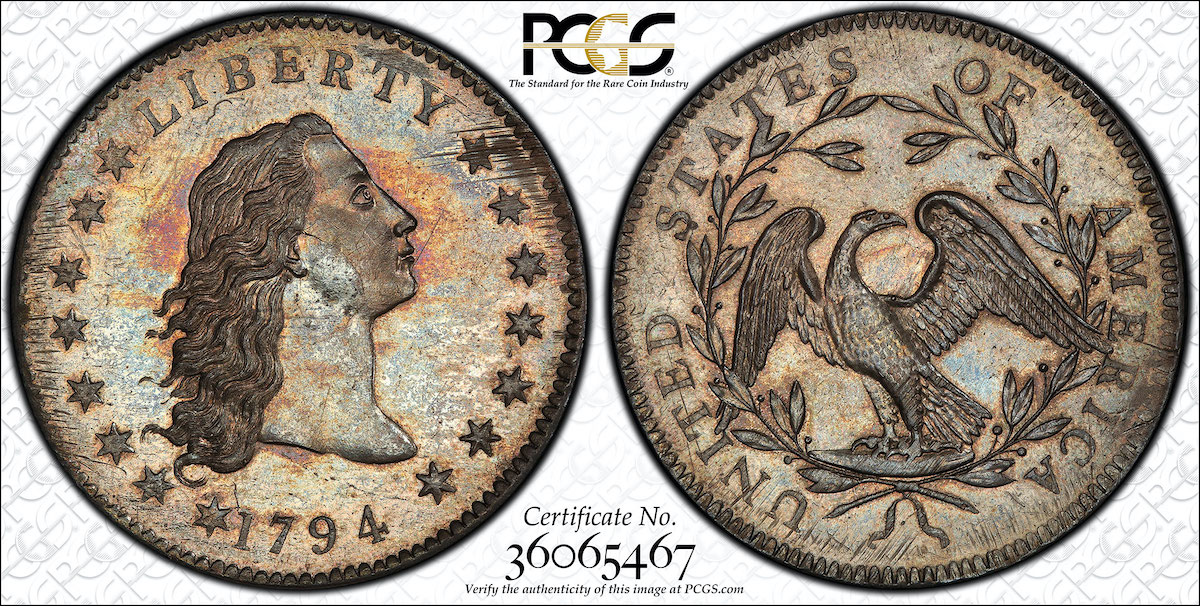
1794 Flowing Hair Dollar, PCGS SP66
(Image courtesy of PCGS)

1804 Draped Bust Dollar, Original – Class BB-304, PCGS PR65 (Image courtesy of PCGS)
While the news focused on the 1794 dollar coin, most missed the Class I 1804 dollar, the other significant rarity in the collection. Class I 1804 dollars was part of the eight coins that were struck in the early 1830s to create sets for diplomatic missions. The 1804 dollar in the Moreland collection is the Dexter Specimen named for one of its first owners James V. Dexter. It is believed that Dexter carved a small “D” into the reverse of the coin.
The coin’s pedigree includes being owned by the U.S. Mint, who bought the coin after being in a private collection, and D. Brent Pogue. It is the third finest example of the 1804 dollar.
The Moreland collection is scheduled to be part of the auction at the PCGS Members-only Show held in Las Vegas in early October.
And now the news…
 → Read more at atlasobscura.com
→ Read more at atlasobscura.com
 → Read more at fresnobee.com
→ Read more at fresnobee.com
 → Read more at euromaidanpress.com
→ Read more at euromaidanpress.com
 → Read more at businessinsider.com.au
→ Read more at businessinsider.com.au
July & August 2020 Numismatic Legislation Review
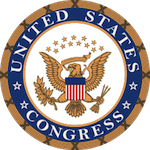 During a class for my master’s degree, a professor was fond of reminding us that politics is a contact sport. He meant that metaphorically, but the point was direct. Politicians will do what they can to get their job done, regardless of the inside consequences.
During a class for my master’s degree, a professor was fond of reminding us that politics is a contact sport. He meant that metaphorically, but the point was direct. Politicians will do what they can to get their job done, regardless of the inside consequences.
Unfortunately, the contact sport has spilled out of the halls of congress into the mainstream. Regardless of whether the proposal has merit and the politician is proposing with good intension, the game no longer is about the substance but the team everyone is on.
S. 4326: 1921 Silver Dollar Coin Anniversary Act
For example, S. 4326, 1921 Silver Dollar Coin Anniversary Act, would allow the U.S. Mint to strike silver dollars to commemorate the 100th Anniversary of the last Morgan Dollar and the 100th Anniversary of the first Peace Dollar. The bill does not limit the number of coins, and does it have an end date.
The bill is not a commemorative coin act. It says that “all coins minted under this Act shall be considered to be numismatic items.” The bill does not add surcharges to the coins’ sale, and the government keeps the seignorage.
Given the popularity of the Morgan and Peace Dollars, it would be logical to consider that the amount of seignorage earned from their sale would provide a good windfall for the government. Give the collectors something to excited about and pocket some change by doing so. A bill like this should be a no-brainer. Right?
I contacted an old friend that has survived the last 20 years on Capitol Hill. Aside from wondering why he was not receiving battle pay, we talked about pending legislation. When I asked about the 1921 Silver Dollar Coin Anniversary Act, he laughed at me.
“If it passes the Senate, the only way it will make past the door of the House would be if (someone) is sick.”
The “(someone)” is one of several members of Congress on one of the teams known to use constitutional procedures against the other team. They have objected to coin-related bills passed by the Senate because they revenue-generating measures. They cite Article I Section 7 of the U.S. Constitution (All Bills for raising Revenue shall originate in the House of Representatives;) to block bills passed by the Senate.
Since a member of the red team introduced S. 4326, the blue team will block the bill from being introduced in the House. Unless the Speaker of the House can convince these members to withdraw their objections, this bill will not pass.
Not all is lost. A version of the bill (H.R. 6192) was introduced in March by Rep Andy Barr (R-KY). If the red and blue teams play nicely together and pass this version, the U.S. Mint may be selling 2021 Morgan and Peace Dollars next year.
H.R. 7995: To amend title 31, United States Code, to save Federal funds by authorizing changes to the composition of circulating coins, and for other purposes.
Rep. Mark E. Amodei (R-NV) introduced H.R. 7995 in August. At this time, the Government Printing Office has not published the text of the bill. Judging by the title as introduced, the bill will require the U.S. Mint to change circulating coinage composition.
Without the text of the bill, it is impossible to judge its merits. I will see if this bill is worth discussing when the bill’s text is posted.
An Open Letter to the ANA and its Members
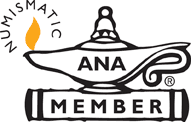 This past weekend, the Newman Numismatic Portal (NNP) held an on-line symposium that was an extended Money Talks session via Zoom. Although using Zoom and the format took advantage of new technologies, it is something I have been trying to convince the American Numismatic Association to do for a long time.
This past weekend, the Newman Numismatic Portal (NNP) held an on-line symposium that was an extended Money Talks session via Zoom. Although using Zoom and the format took advantage of new technologies, it is something I have been trying to convince the American Numismatic Association to do for a long time.
On May 21, 2016, I wrote, “Now is the time for the ANA and any other organizations that provides educational sessions to consider adding online access to their shows.”
Since then, I have been trying to convince the Association that it could extend its reach beyond the Summer Seminar and the World’s Fair of Money by broadcasting the content on-line.
“There are technologies that can help support the bringing the lectures, courses, and other activities to an online community,” I wrote in 2016. “There are a number of web-based conferencing system that requires a minimal amount of technology to broadcast these activities to collectors everywhere.”
I wrote that before the creation of Zoom!
Unfortunately, the ANA President and Board of Governors ignored all previous work regarding online education, making the Association look like an also-ran. Although some of the Summer Seminar sessions appeared online, the NNP Symposium surpassed the reach of the Summer Seminar in both content and impact.
The NNP succeeded where the ANA has failed. The NNP took advantage of modern technology to deliver numismatic education while the ANA, whose mission is supposed to be education, has done very little.
Why?
Why has the ANA Board of Governors failed in its mission?
It is easy to lead when times are good. An extended period of good times allows organizations to sit on its laurels. They can point to incremental changes as progress.
Leadership means being able to lead during good times and know how to respond when a crisis occurs.
“What leaders have to realize is that when a crisis hits, you can’t just rest on your laurels and think that everything will move along normally,” says Ronald Riggio, Ph.D., a professor of leadership and organizational psychology at Claremont McKenna College in California. “You need to train, prepare and execute.”
The ANA did not plan. The ANA was not prepared. There was nothing for the ANA to execute. The ANA FAILED in its mission.
The Board was told that it needed to expand to online education. When I was asked, “Can’t the ANA use something like Zoom to create classes?” Not only did I say it was possible, but I also noted other services the ANA could have used.
When I learned that Robert Oberth was appointed the Chair of the Information Technology Committee, I had a conversation with him on Facebook as part of comments to a post on the ANA Facebook page. I used Facebook to keep the conversation open and allow any member interested in why the ANA has failed to meet its members’ obligations.
As part of the conversations, I provided the lines to my writing on the subject. Unfortunately, the conversation has little impact. The ANA is lagging behind everyone in providing online education.
Even though I am not on the IT Committee, it does have institutional knowledge. According to the committee membership list published on the ANA website, Governor Greg Lyon is also a committee member. In his sixth and final term as ANA Governor, Lyon has been involved with the committee since the beginning. Lyon was the original Board liaison to the committee.
Lyon has not said much about the committee and its work either to me or in public. Now, when the ANA could use guidance, where is he? There is an English proverb that says, “cometh the hour, cometh the man.” A term that is associated with Winston Churchill, who stepped up when his country needed him.
Hey Greg, the ANA needs leadership. Where are you?
It has been six months since the crisis began. Where is the Board of Governors? What are you getting accomplished in those “excruciating” Board meetings (your word, Steve)?
The ANA Board of Governors has failed the Association and its members. These are the people who need to resign TODAY and allow new leadership to be selected by ANA members:
- President Steve Ellsworth
- Vice President Ralph Ross
- Governors:
- Mike Ellis
- Muriel Eymery
- Mary Lynn Garrett
- Greg Lyon
- Cliff Mishler
- Rob Oberth
- Shanna Schmidt
Are there six people who will run for the Board of Governors? If there are, I will join you to make a slate of seven people whose only purpose is to lift the ANA from the morass created by the current Board.
NNP Symposium 2020 Was A Success
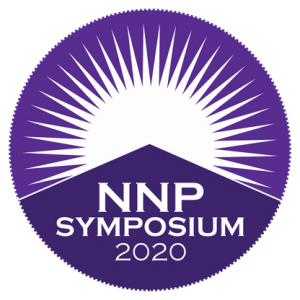 This past weekend, the Newman Numismatic Portal (NNP) sponsored the NNP Symposium. For three days, NNP used Zoom to facilitate 38 sessions about different aspects of numismatics. The topics covered everything from U.S. and foreign numismatics to discussions about the industry. The Numismatic Bibliomania Society held its Annual Meeting via Zoom, and Matt Dinger & Mike Nottelmann did a live version of The Coin Show. After listening to them for a while, I now see what they look like — I do not know if that is a good or bad thing.
This past weekend, the Newman Numismatic Portal (NNP) sponsored the NNP Symposium. For three days, NNP used Zoom to facilitate 38 sessions about different aspects of numismatics. The topics covered everything from U.S. and foreign numismatics to discussions about the industry. The Numismatic Bibliomania Society held its Annual Meeting via Zoom, and Matt Dinger & Mike Nottelmann did a live version of The Coin Show. After listening to them for a while, I now see what they look like — I do not know if that is a good or bad thing.
I was able to attend several of the sessions and deliver one of my own. Every session I attended was interesting and informative. The only complaint I had was that I could not attend every session. However, the NNP recorded each session and will be making them available online.
If you wanted to attend the symposium, you had to register to receive the Zoom credentials. There was no cost to register and no restrictions on the device you used. I attended the session before mine, presented by Doug Mudd, using my iPad. Since he went a little long, I was able to log into my session on my computer while watching the end of Doug’s on my iPad.
The entire numismatic community must commend the NNP and Lianna Spurrier, who coordinated the online event. Spurrier did the call for speakers, training sessions with the speakers, and probably a lot more behind the scenes we did not see.
As a member of the Numismatic Literary Guild, if there is an award for excellence in facilitating education, please allow me to nominate Spurrier for the award.
The NNP Symposium came due to an unusual set of circumstances that has seen the ANA’s Summer Seminar and every major coin show canceled. The NNP hit a homerun with its effort. The symposium was such a success that I hope the NNP makes this an annual event.

